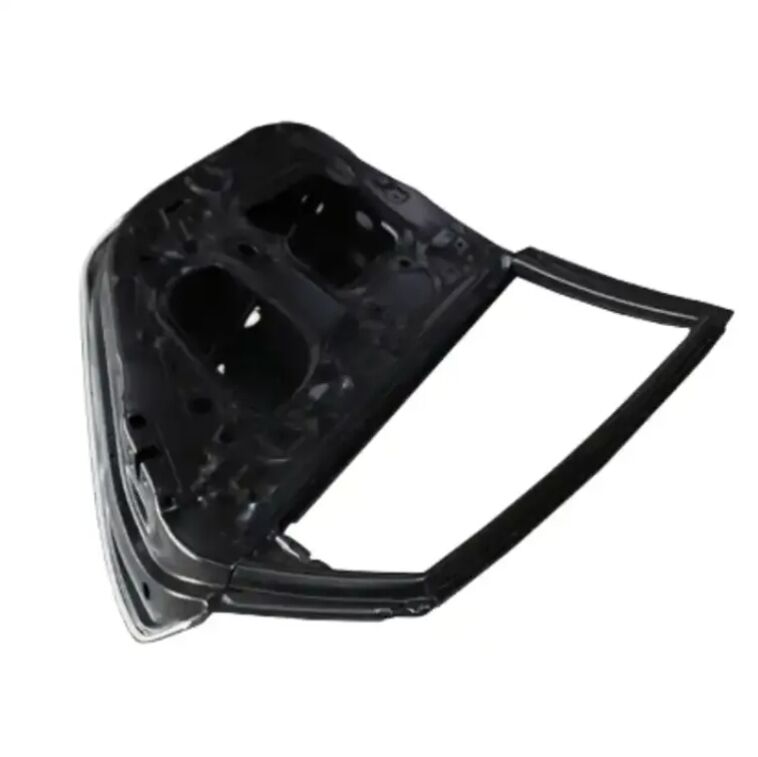Understanding LED Taillight Longevity and Performance
LED taillights have revolutionized automotive lighting technology, offering superior durability and efficiency compared to traditional incandescent bulbs. Modern vehicles increasingly feature LED taillight systems as standard equipment, promising extended lifespans and enhanced safety features. While many manufacturers advertise impressive durability claims, it's essential to understand the real-world factors that influence LED taillight lifespan and when you might notice diminishing brightness.
The typical LED taillight assembly can function for 50,000 to 100,000 hours under optimal conditions. However, various environmental and operational factors can impact their actual service life. Understanding these elements helps vehicle owners maintain their lighting systems effectively and ensure consistent performance throughout their vehicle's lifetime.
Core Components of LED Taillight Systems
LED Diode Technology and Construction
LED taillights utilize advanced semiconductor technology to produce light efficiently. The core component consists of multiple light-emitting diodes arranged in specific patterns to achieve the desired brightness and coverage. These diodes are protected by durable polycarbonate lenses and housed within weather-resistant assemblies designed to withstand various environmental conditions.
The construction quality of LED taillight assemblies plays a crucial role in their longevity. Premium manufacturers utilize high-grade silicon and superior manufacturing processes to ensure consistent performance and minimal degradation over time. The housing design also incorporates thermal management features to prevent overheating, which can significantly impact the LED taillight lifespan.
Power Management and Control Systems
Modern LED taillights incorporate sophisticated power management circuits that regulate voltage and current flow. These systems protect the LEDs from power surges and ensure optimal operating conditions. The control modules also monitor temperature and adjust power delivery accordingly, helping prevent premature aging and maintain consistent light output.
The integration of smart monitoring systems in newer vehicles allows for early detection of potential issues, helping drivers address problems before significant dimming occurs. These systems can detect variations in power consumption and light output, providing valuable feedback about the taillight's performance.
Factors Affecting LED Taillight Performance
Environmental Impact and Weather Conditions
External factors significantly influence LED taillight lifespan and brightness retention. Extreme temperatures, particularly high heat, can accelerate the aging process of LED components. Vehicles regularly exposed to intense sunlight or operating in hot climates may experience faster degradation rates. Similarly, constant exposure to road salt, moisture, and severe weather conditions can affect the protective housing and internal components.
Proper ventilation and cooling systems within the taillight assembly help mitigate these environmental challenges. Quality manufacturers design their LED taillights with robust thermal management solutions and weather-resistant seals to maintain optimal performance across diverse climate conditions.
Usage Patterns and Driving Habits
The way a vehicle is used directly impacts LED taillight durability. Frequent short trips with numerous brake applications can increase the thermal cycling of LED components, potentially affecting their long-term performance. Additionally, vehicles primarily used during nighttime hours naturally experience more intensive LED operation, which could lead to earlier signs of dimming.
Regular maintenance and inspection practices can help identify early signs of degradation and ensure optimal performance. Simple steps like keeping the taillight assemblies clean and checking for condensation can extend their effective lifespan significantly.
Signs of LED Taillight Aging
Visual Indicators of Diminishing Performance
While LED taillights are designed for extended service life, certain signs may indicate the onset of performance degradation. Early warnings often include subtle changes in light intensity or color consistency. Some LEDs within the assembly may appear slightly dimmer or show variations in brightness compared to others. These changes typically occur gradually over several years of regular use.
Professional inspection tools can measure light output accurately, helping determine whether taillights are maintaining their specified brightness levels. Regular visual checks during vehicle maintenance can also help identify potential issues before they become significant safety concerns.
Performance Monitoring and Maintenance
Modern vehicles equipped with advanced diagnostic systems can detect variations in LED taillight performance before they become visible to the human eye. These systems monitor electrical consumption patterns and light output consistency, providing early warnings when maintenance might be required. Regular diagnostic checks can help ensure optimal performance and safety compliance.
Establishing a routine maintenance schedule that includes thorough inspection of lighting systems helps maintain consistent performance. Professional automotive technicians can conduct comprehensive evaluations using specialized equipment to measure light output and identify potential issues early in their development.
Maximizing LED Taillight Longevity
Preventive Maintenance Strategies
Implementing effective maintenance practices can significantly extend LED taillight lifespan. Regular cleaning of the outer lens surfaces helps maintain optimal light transmission and prevents accumulation of road grime that could affect cooling efficiency. Checking and maintaining proper voltage levels in the vehicle's electrical system also contributes to LED longevity.
Professional inspection of seals and ventilation systems helps prevent moisture intrusion and ensures proper heat dissipation. Addressing any signs of condensation or damage to the housing promptly can prevent accelerated aging of LED components.
Upgrading and Replacement Considerations
When replacement becomes necessary, selecting high-quality LED taillight assemblies from reputable manufacturers ensures optimal performance and longevity. Modern replacement options often offer improved features and efficiency compared to original equipment, potentially providing better long-term value.
Working with qualified automotive professionals for installation ensures proper alignment, sealing, and electrical connections. Professional installation also typically includes calibration of monitoring systems and verification of light output levels.
Frequently Asked Questions
When should I consider replacing my LED taillights?
Consider replacement when you notice consistent dimming, color changes, or if your vehicle's diagnostic system indicates degraded performance. Typically, this occurs after 7-10 years of regular use, though premium LED taillights may last significantly longer.
Can extreme weather conditions damage LED taillights?
While LED taillights are designed to withstand various weather conditions, extreme temperatures and prolonged exposure to harsh elements can accelerate aging. Regular inspection and maintenance help mitigate weather-related impacts on performance.
Are aftermarket LED taillights as reliable as original equipment?
Quality aftermarket LED taillights from reputable manufacturers can match or exceed original equipment performance. Look for products with proper certifications and warranty coverage to ensure reliability and compliance with safety standards.
How can I maintain optimal LED taillight performance?
Regular cleaning, prompt repair of any damage to housings or lenses, and periodic professional inspections help maintain optimal performance. Additionally, ensuring proper vehicle electrical system maintenance contributes to LED taillight longevity.

